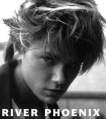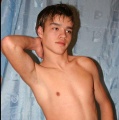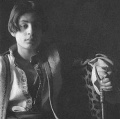One of our staff members is contributing considerably to a News Archiving service at Mu. Any well educated (Masters, PhD or above) users who wish to make comments on news sites, please contact Jim Burton directly rather than using this list, and we can work on maximising view count.
Boy Photography
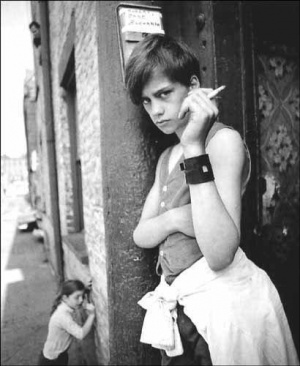
Boys have inspired many photographers and since the late 19th century, the nude boy has been the favorite subject of many photographers, professional or not. Today, due to recent concerns about child pornography, few photographers continue this tradition.
At the end of 19th century the most prominent photographer of the male nude was Wilhelm von Gloeden (1856–1931), a boylover himself, whom specialized in pastoral nude studies of Italian boys. Other notable photographers of nude boys up until the 1930s were von Gloeden's cousin Guglielmo Plüschow (1852–1930), Gaetano D'Agata (1883–1949), American painter Thomas Eakins (1844–1916) who used his photographs as models for some of his paintings, American photographer F. Holland Day (1864–1933), and author Baron Corvo (pseud. of Frederick William Rolfe) (1860–1913) who took many photographs of his young Italian boyfriends. Also notable was the contribution of Rudolf Lehnert (1878–1948) who photographed adolescent boys and girls in Tunisia. These pictures were circulated among boylovers such as the "Uranian" poets in England, but also used as illustrations in the German homosexual magazine Der Eigene (1899–1929) and in the early publications of The Fortune Press and The Cayme Press.
By the 1930s several photographers working on homoerotic themes, like Herbert List (1903–1975), showed an interest to boys as subjects, whereas others like Karel Egermeier and Jacques Simonot (1925-1982) focussed exclusively on boys publishing their work in youth and scouting magazines. The post-war naturist culture gave many opportunities to capture naked boys at play, with Hajo Ortil (1905–1983) being the most prominent naturist photographer of boys. The photographic output on boys of the first half of the 20th century was later presented in popular books such as The Boy: A Photographic Essay (1964) and Boys will be Boys (1966).
During the 1960s, documentary photographer Will McBride (1931– ) begun an interesting body of work with a special focus on boys including several nude studies that served as models for his work as a sculptor. Around the same time photographer, and later director, Larry Clark (1943– ) begun his projects of photographing teenagers in the United States suburbia.
The sexual and gay liberation of the late 1960s-early 1970s had their impact on the proliferation of nude boy photography. During the mid 1970s, at least a dozen magazines featuring naked photographs of boys, mostly "physique" poses, taken by amateurs (but also professionals like Harlan 'Slim' Pfeiffer) circulated freely in Europe and North America. A few years later, however, magazines like Boy (published by COQ International), Naked Boyhood Magazine (published by Lyric International), Piccollo, David, Beach Boy, Jean's, Tommy, Chicken, Boy Studies, and others, became illegal.
During the 1980s publishing pictures of naked boys took different ways. Laws in Europe were tolerant of work that had artistic merit and a considerable number of photographers like Gérard Marot, Negrepont, Bernard Alapetite, Christophe Baltus, Jos Maier, D.H. Mader (1948– ) and others, had their works published by specialized publishers like J.M.V. Diffusion or self-published. This trend continued somewhat well into the 1990s with photographer Mike Tedder (1958– ), publishers Janssen-Verlag and Edition Pojkart and the glossy magazines Martin (in Czech Republic), OK Magazine (in the Netherlands), Gayme (in the United States), as well as the bilingual English/German Koinos.
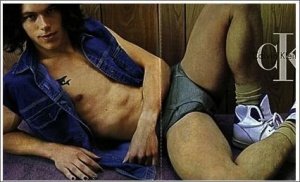
With the turn of the 21st century concerns over child pornography became ever stronger with artists like Jock Sturges (1947– ), Sally Mann (1951– ) and naturist magazines like Jeunes et Naturels having troubles with the Law. As a result, publishers became unable to publish photographs of naked boys and photographers became reluctant to use boys as their subjects. Perhaps the next step will be to attack the work of Anthony Goicolea (1971– ) and Bernard Faucon (1950– ), who often produced staged photography with the use of mannequis and manipulated self-portraits, in line with the latest "virtual child pornography" laws.
Modern use and legality issues
Due to the passing of new laws and an international law-enforcement crackdown on nude and erotic boy photography (as Child Pornography), boylovers who collect such images are now running a high risk in most jurisdictions. Most photographic "CP" can be said to come from four basic sources:
- Professional-commercial photography. Commercial, erotic boy photography is no longer produced (in its sexually explicit form), and most commentators outside of the child abuse hegemony will concede that its modern equivalent is a figment of the popular imagination. Enterprises such as Swissarts have gone on to make borderline non-nude photosets involving posing prepubescent boys.
- Opportunistic, or boyeur type photography imported from explicitly non-pornographic sources. These can be candid family nudes or naturist images rendered "obscene" or "abusive" by modern, anti-pedophile statutes. Some naked photography was and is sold as art, on the commercial market as well - the legality of such being subject to jurisdiction and dispute.
- Amateur pornography Images are sometimes produced by families, enterprising individuals, and notably by western tourists and clients of under-age rent boys in less developed nations, notably in Asia.
- Children's pornography, a la self-made sexting type images, which sometimes appear in the collections of adult BLs. However, this culturally subversive and growing trend rarely serves persons above the age of majority, as minors are stringently segregated in cultures which embrace modern technology. In some cases, adults and children have subverted this by ripping self-made boy-porn content from webcam sites such as Stickam, and uploading it to anonymous servers
Modern examples
Modern-day "legitimate" BL collections may contain photographs from a variety of sources, including selfies and family pics. Some other examples follow:
-
Candids often show the athletic grace of teen boys
-
Professional boy models
-
Celebrities and boy-legends
-
Candid celebrities (not necessarily models)
-
Gay "twink" porn aimed mainly at Ephebophilic men
-
Historical photography
-
Pojkart
Boy photographers
Unmentioned boy photographers or publishers who acknowledge boys' (or boyish) erotic potential:
- Arthur Tress - Artistic nudes
- Contemporary "twink" sites such as Boy Collector, Mike18 and the prolific, but now defunct GayTeen Studio, using mainly 18+ East European males.
- Hugh Holland - Review by William A. Percy of Hugh Holland's photographs in Locals Only: California Skateboarding 1975-1978
See also
- Lyric International - A historical producer of boy-nude photography.
Further reading
- Giovanni Dall'Orto, "Brevissima storia del nudo maschile nella fotografia."
- D.H. Mader, "The problems and pleasures of looking: photographers of 'scoutisme'," Gayme 50-58.
- Rictor Norton, "The beginnings of Beefcake or, the origins of the male nude in photography."


